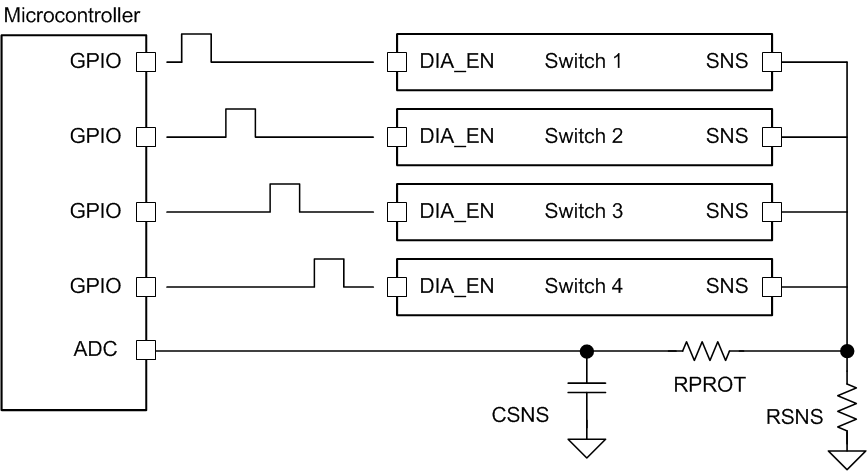ZHCSJY9B June 2019 – November 2021 TPS1HB50-Q1
PRODUCTION DATA
- 1 特性
- 2 应用
- 3 说明
- 4 Revision History
- 5 Device Comparison Table
- 6 Pin Configuration and Functions
- 7 Specifications
- 8 Parameter Measurement Information
-
9 Detailed Description
- 9.1 Overview
- 9.2 Functional Block Diagram
- 9.3
Feature Description
- 9.3.1 Protection Mechanisms
- 9.3.2 Diagnostic Mechanisms
- 9.4 Device Functional Modes
- 10Application and Implementation
- 11Power Supply Recommendations
- 12Layout
- 13Device and Documentation Support
- 14Mechanical, Packaging, and Orderable Information
9.3.2.4 Resistor Sharing
Multiple high-side devices can use the same SNS resistor as shown in Figure 9-10. This action reduces the total number of passive components in the system and the number of ADC terminals that are required of the microcontroller.
 Figure 9-10 Sharing RSNS Among Multiple Devices
Figure 9-10 Sharing RSNS Among Multiple Devices